Research & Development
Our expertise and tests facilities at the service of your R&D Projects
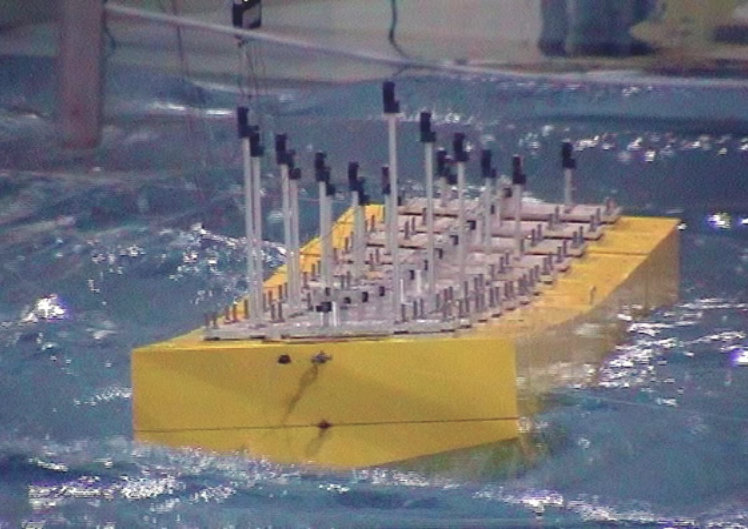
Our strengths
- More than 20 years of experience in setting, managing and participating to R&D projects, internally or through JIP, with local, French and European companies and Research and Development centres (universities and engineering schools)
- A unique combination of tests facilities in France
- An internationally recognized expertise
Océanide devotes a significant part of its activities to R&D. Indeed, more than a third of basin time is dedicated to R&D activities.
From academic research with Research and Development centres (universities and engineering schools) to applied industry research on innovative concepts, Océanide brings its unique combination of tests facilities in France and its skills in the numerical and physical modelling of complex phenomena.
These projects are financed by its own funds or by other private companies and/or public entities such as ADEME, BPI, la Région Sud, TPM, Europe…
Océanide has the agreement of ‘crédit impôt recherche’ as a R&D contractor and is member of the ‘Pôle de Compétitivité Mer PACA’.
Author and co-author of numerous scientific papers, Océanide participates on a regular basis to specialised conferences. In 2014, Océanide was awarded by OMAE as best paper of the Offshore Technology Symposium (paper 24531).
R&D - Coastal engineering
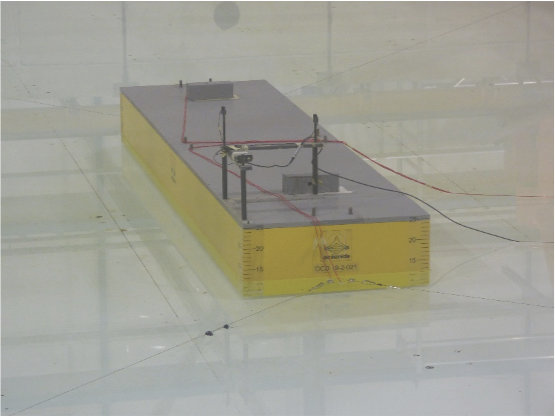
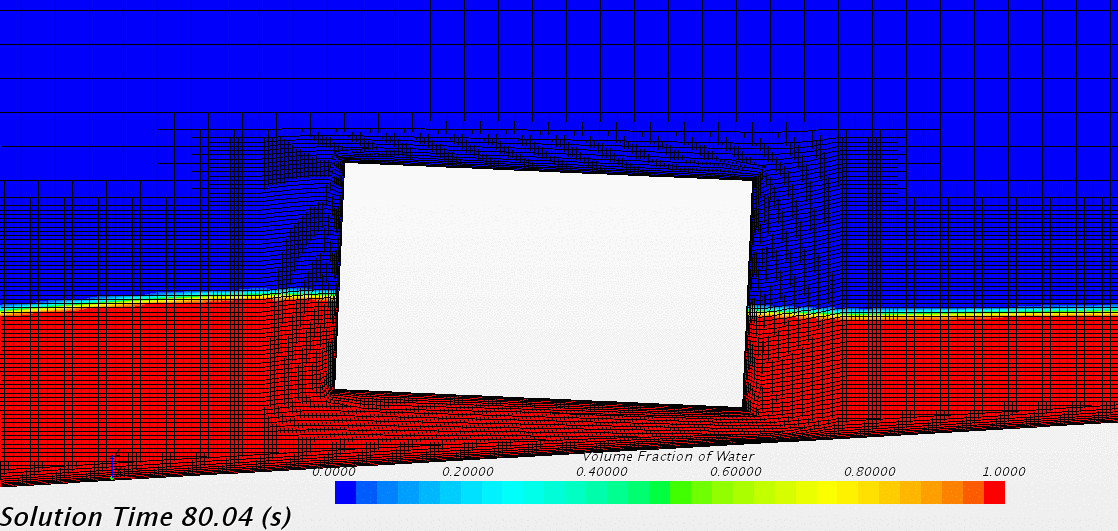
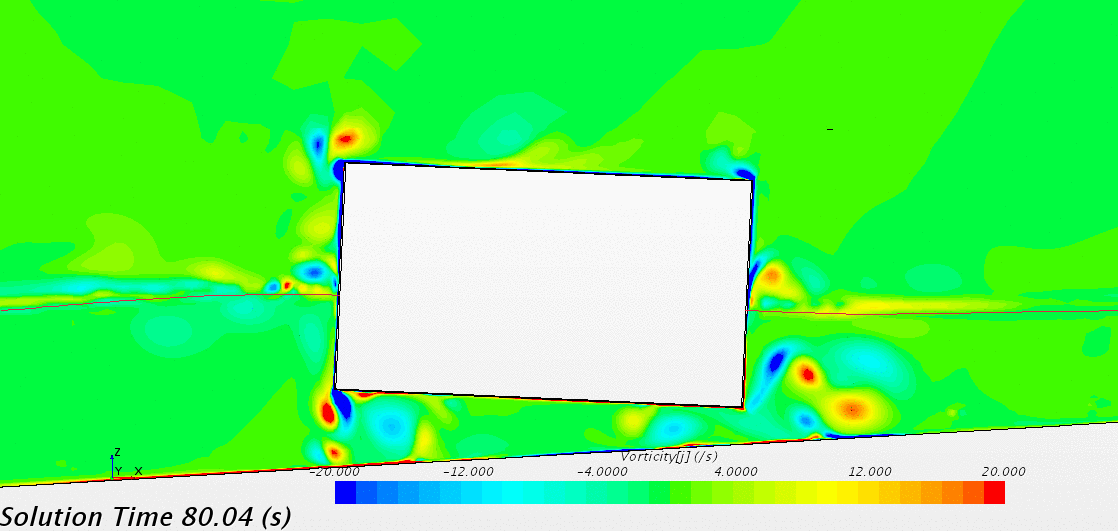
| Sponsors | Program / Project |
|---|---|
| Doris, Technip, Saipem, … | CITEPH / Near Shore FSRU: Mooring system of floating structures in shallow water including infra-gravity wave impact |
| BPI / Région Sud / TPM | FUI-21 / Poseidon-Expé: next-generation centre for the physical modelling of extreme climate events and of their impact on waterfront |
| ANR | ASTRID / MORHOC'H 2: Interaction modelling of wave and non-homogenous current in coastal area |
| ADEME | Initiative PME / Opticable: Tool for the optimisation of power cable routing for marine renewables |
| EDF-EN / RTE, … | JIP Cability: Marine renewables power cables stability on rocky seabed |
R&D - Marine Renewable Energies


| Sponsors | Program / Project |
|---|---|
| Total, Doris, Technip, … | CITEPH / RTHM: Development of a hybrid real-time modelling system, combining a physical model and a numerical model, applied to floating wind turbines |
| Europe | H2020 / Marinet2: evaluation of marine renewable energy convertor concepts |
| ADEME | PIA | EolFloat: Semi-submersible foundation for high-capacity wind turbines |
| CG83 | Gis-Hydro | SEAREV: Système Electrique Autonome de Récupération de l'Energie des Vagues (Autonomous electric system for wave energy convertion) |
| BPI / Région PACA / Région Bretagne | FUI-11 / Bilboquet: Electricity production from wave energy |
R&D - Oil & Gas

| Sponsors | Program / Project |
|---|---|
| Subsea7, Saipem… | CITEPH / VIV et WIO of risers in tandem configuration |
| Shell, Statoil… | JIP Subsea Well Response Project / Development of a quick response system to subsea well incidents |
| BP, Chevron… | JIP Floating Flexible / cryogenic floating flexible pipelines for LNG transfer operations |
| SBM | Sloshing in large moonpools (best paper award at OMAE 2014) |
| Europe | FP5 / OCTOPLUS : Optimum concept to produce and load with underwater storage |
R&D - Other concepts
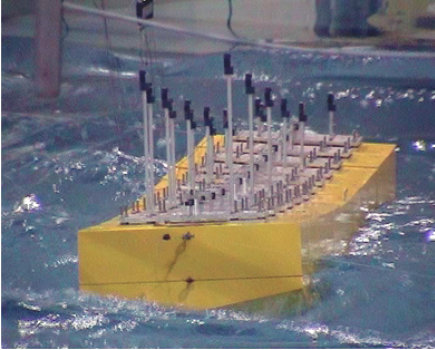
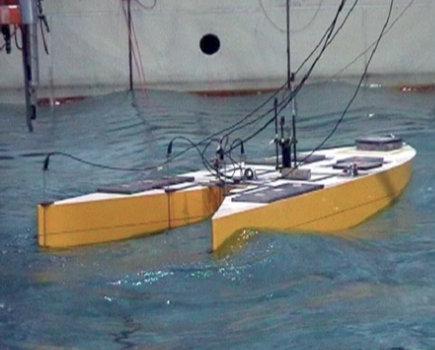
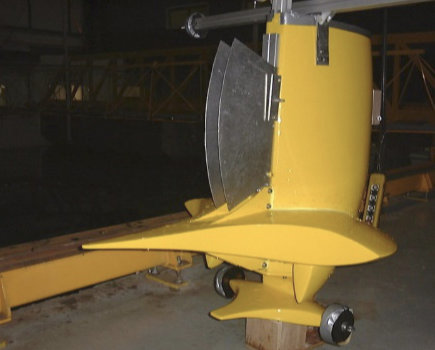
| Sponsors | Program / Project |
|---|---|
| CG83 | Gis-Hydro / Hydro-elastic barge |
| Europe | FP7 / TULCS: Tools For Ultra Large Container Ship |
| Doris, ALSTOM | CEP&M / NAVPOLEM: Large depollution ship |
| CG83 | Gis-Hydro / Sea-Orbiter: oceanic exploration vessel and a universal scientific laboratory designed by the architect Jacques Rougerie |
| Airbus Helicopter | Emergency flotation system for sea landing |
EUROSWAC
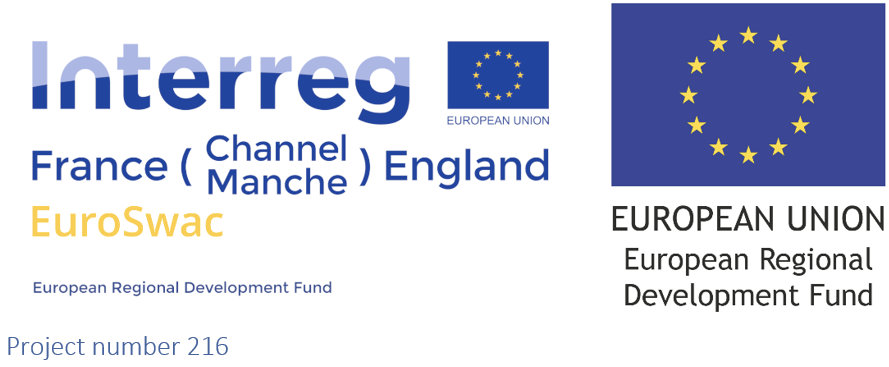
Highly efficient innovative shallow-water based Sea Water Air Conditioning solution for the Channel Area
EUROSWAC is co-financed by the European Regional Development Fund, total budget of €3,515,877.84, including ERDF fund of €2,295,250.24.
Aims
EUROSWAC aims at designing and validating an innovative, cost-efficient and environmentally friendly solution for cooling production, using English Channel’s seawater (widely available renewable energy source) as refrigerant
Motivation
While the need for cooling in large coastal cities is increasing at UK-FR levels (due to climate change crease), cooling is still mainly produced through chillers, a technology using large amounts of electricity generated partially by fossil fuels, slowing down the ability to meet Channel Area (CA) energy-climate objectives. EUROSWAC demonstrates the ability of using the Channel seawater for free cooling, adapting an existing technology used in tropical areas to the low depth and temperate climate of CA.
Partnerships
Building on complementary expertise of 11 UK-FR partners from the academic and industrial fields and on the analysis of Channel’s unique features, EUROSWAC aims to develop and test in real life conditions a SWAC prototype at the Brixham laboratory and National Lobster Hatchery in UK. This shallow-water based SWAC system will be the first to support enhancing aquaculture food-stock, which will represent major benefits in regards to CO2 emissions, lifespan and costs compared to existing solutions.

For more information on the project and its results please click here : https://euroswac.fr/
PUBLICATIONS
| Year | Conference | Entitled |
|---|---|---|
| 2002 | SEATECH | Etude expérimentale du comportement hydro-AéroElastique d’une éolienne offshore sur ancrages tendus |
| 2006 | OMAE | Experimental and Numerical Study of Wake Interference and Clashing Between Steel Catenary Risers |
| 2007 | OMAE | Experimental and Numerical Study of Wake Interference and Clashing Between Steel Catenary Risers |
| 2009 | DOT | Installation of Large Subsea Package |
| 2009 | IMAM | Experimental and numerical study of the gap resonances in-between two rectangular barges |
| 2009 | OTC | Comparison of tank testing and numerical analysis for the design of a catamaran for deck installation by the float-over method |
| 2010 | JGC | Conception d'une digue à berme reprofilable pour le projet d'extension du port de Roscoff-bloscon |
| 2010 | JH12 | Experimental study of vortex induced vibrations at high reynolds numbers |
| 2010 | JOAE | Experimental and numerical study of wake interference and clashing between steel catenary risers |
| 2010 | RINA | On the roll damping of an FPSO with riser balcony and bilge keels |
| 2011 | AOR | Experimental and numerical study of the effect of variable bathymetry on the slow-drift wave response of floating bodies |
| 2011 | ATC | Wave propagation at marginal ice zone |
| 2011 | OMAE | Flat buoy concept for free standing riser application: an improvement of the in-place hydrodynamic behaviour |
| 2012 | HYEL | Experimental investigation on the galloping response of sqare cylinders at high reynolds numbers |
| 2012 | ISOPE | CFD and experimental investigations of slamming load prediction on subsea structures in splash zone |
| 2012 | JFM | Bottom pressure distribution due to wave scattering near a submerged obstacle |
| 2012 | OMAE | Shielding effect on the overall hdrodynamic properties of complex subsea structures |
| 2012 | OTC | Galloping Assessment: Instability Occurrence of Slender Structures of Non-Circular Cross Section in Current Flow |
| 2012 | JH13 | Second order loads characterization in shallow water with a slope bottom |
| 2013 | ATMA | Underwater gas leak - comparison between computations and model tests |
| 2013 | OMAE | Experimental investigations of VIV at high Reynolds numbers for smooth circular cylinders in single and tandem arrangement |
| 2013 | OMAE | Comparison between static, forced oscillation and free oscillation model tests for the assessement of galloping instability at high Reynolds numbers |
| 2014 | JNGCGC | Port-La Nouvelle - Etapes du débat public sur le projet d’extension de l’infrastructure portuaire |
| 2014 | OMAE | Desgin aspects of large diameter turret systems - Part 1 : moonpool sloshing |
| 2016 | JNGCGC | A new concept of offshore wind turbine derived from Oil & Gas technology |
| 2018 | OMAE | Experimental and numerical study of vortex induced vibrations on a spool model |
| 2018 | OTC | Modeling Subsea Gas Release to Atmospheric Gas Dispersion Cloud |
| 2020 | EERA | Real time hybrid modelling applied to a floating offshore wind turbine using a ducted fan |
| 2020 | JNGCGC | Impact des vagues sur les structures en encorbellement de faible altitude au-dessus de la mer |
| 2020 | JNGCGC | Experimental measurement of wave loads on a concrete caisson: a comparison between direct measurement and pressures integration |
| 2020 | OMAE | On the real time hybrid modelling of floating offshore wind turbine using ducted fan(s) |
| 2020 | OMAE | Numerical ocean wave-basin (now) - a numerical solution for FSRU |
| 2020 | OMAE | Experimental and numerical assessment of both Slug and vortex induced vibrations on a spool model |
| 2020 | OMAE | Experimental and numerical study of the influence of drag coefficient on snap loads in mooring lines of a floating offshore wind turbine |